Kodak 35mm puts in a versatile, cost-effective performance on 'Alice et le Maire'
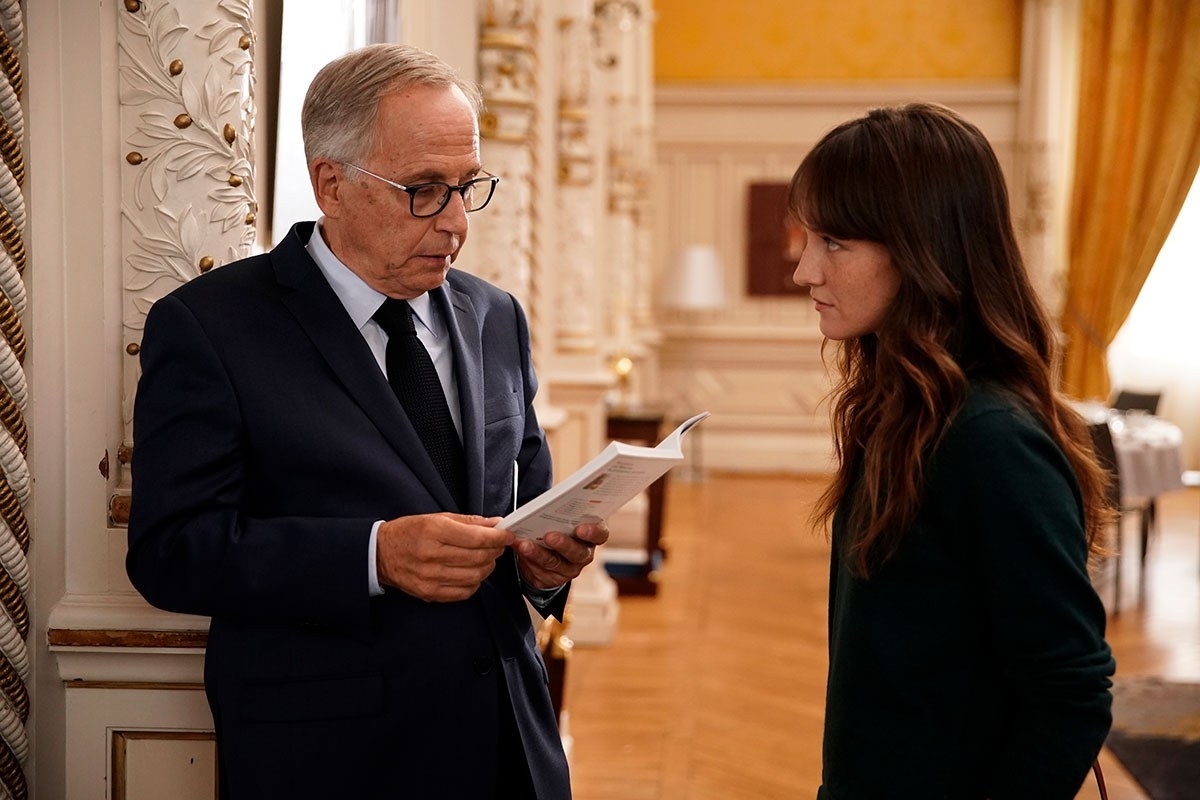
Actors Fabrice Luchini and Anaïs Demoustier performing in director Nicolas Pariser’s "Alice et le Maire."
Kodak 35mm film proved a flexible and perfectly economic performer for director Nicolas Pariser’s low-budget political, philosophical comedy Alice et le Maire (Alice and the Mayor).
In Alice et le Maire, Paul Théraneau (Fabrice Luchini), the Mayor of Lyon, is in existential crisis. After 30 years in politics, he feels totally empty and devoid of ideas. As a fix for this problem, his aides invite a brilliant young philosopher, Alice Heimann (Anaïs Demoustier), into his inner circle. A dialogue develops between Alice and the Mayor and the two become close, which calls into question everything they were most sure of. Gradually, the inevitable question arises: are philosophy and political necessity actually compatible?
Cinematographic duties on the film fell to French DP Sébastien Buchmann AFC, who shot Le Grand Jeu (2015) for Pariser, as well as the director’s many previous short films. Production took place for seven weeks, during the summer of 2018, taking in locations in Lyon, the capital city in France’s Auvergne-Rhône-Alpes region. These included interiors that doubled for those in the city’s majestic town hall as well as more modest and modern administrative office spaces.
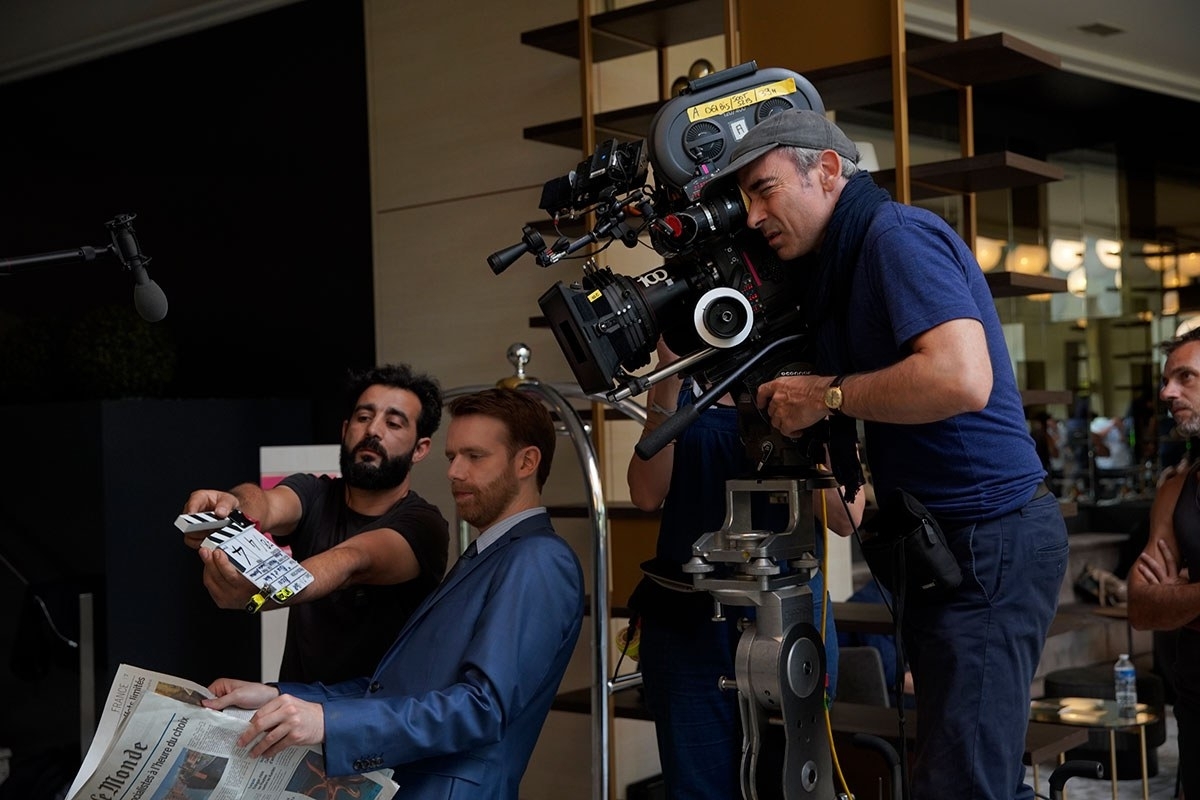
Left to right: Key grip Ahmed Zaoui, actor Antoine Reinartz and DP Sébastien Buchmann AFC, shooting a detail in a newspaper for Nicolas Pariser’s "Alice et le Maire." © Roger Arpajou.
“Interior locations and the faces of our protagonists were key ingredients in the visual make-up of this film, together with Nicolas’ desire for a contemporary, naturalistic and everyday look,” says Buchmann, whose previous celluloid feature credits include Vladimir Léon’s Les Anges de Portbou (2011), and Mikhaël Hers Memory Lane (2010), This Summer Feeling (2015) and Amanda (2018).
“I shot Amanda using a combination of Super16mm and 2-perf 35mm, and it proved to be very successful visually, and perfectly viable financially too,” he says. “However, film capture was not necessarily a given when I started on Alice et le Maire. We had a modest budget of less than €4MEuros, the producers were concerned about costs and, although they were willing, they were not sure they could afford to shoot on film.
“So, I reminded them how Nicolas’s style – long takes and almost no coverage, which he did successfully on Le Grand Jeu – actually produces a limited volume of dailies, less than 45-minutes per day. We discussed how this approach would make celluloid capture far less expensive, and therefore make it perfectly possible to shoot Alice et le Maire on film. They agreed.”
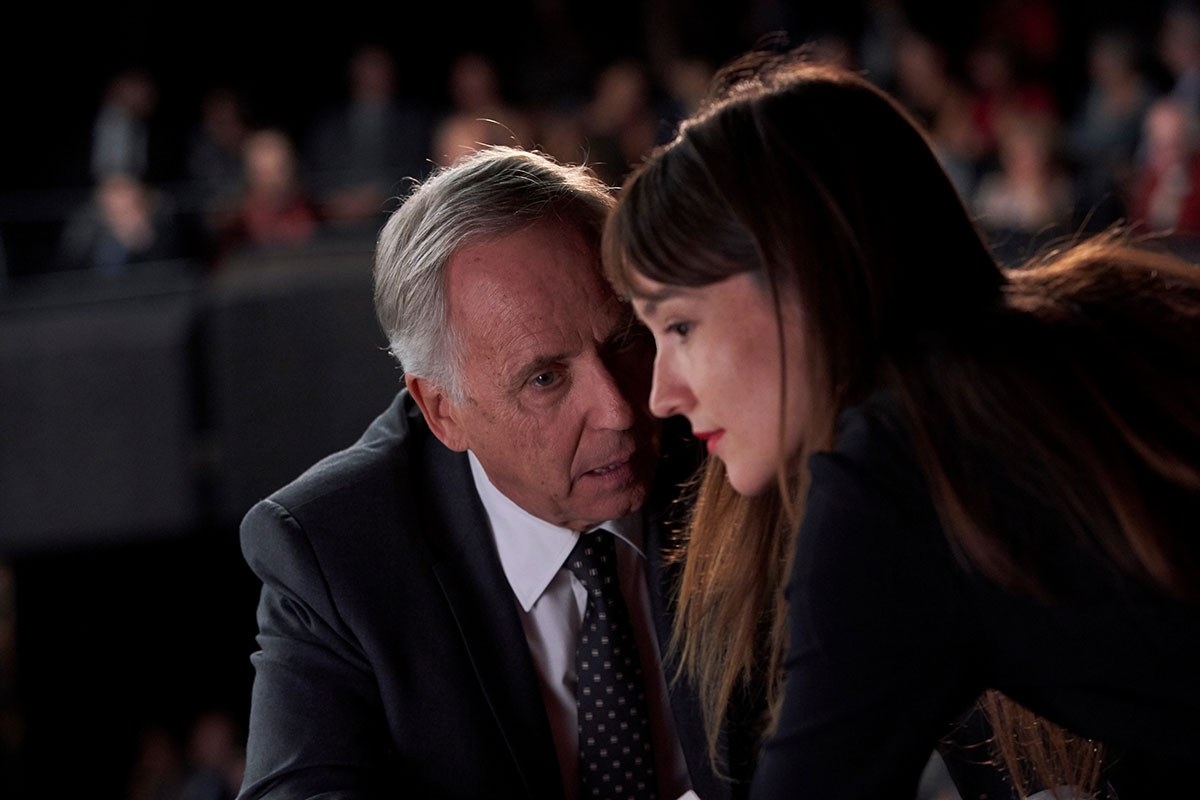
Actors Fabrice Luchini and Anaïs Demoustier performing in director Nicolas Pariser’s "Alice et le Maire."
Accordingly, Buchmann undertook a series of tests, shooting both 2-perf and 3-perf 35mm. He and Pariser eventually opted to shoot 3-perf, in 1.85:1 aspect ratio, as it would best reflect the grandeur of Lyon’s historic town hall, provide a visual intimacy with the actors, while also telling the story in a frame size that would not draw attention to itself.
“Nicolas did not want a strong or stylized photographic language for this film, preferring a softer, more quotidian, everyday aesthetic.” says Buchmann. “3-perf, 1.85:1 is not spectacular like Cinemascope and is less trendy than 1.33:1. It’s sort of invisible. Although you don’t get the same financial rewards as 2-perf, the lower volume of film you use in 3-perf still means you get the benefit of considerable stock and processing cost-savings.”
In terms of visual references, Buchmann was encouraged by his director to absorb the soft, discreet lighting style created by DP Carlo Di Palma for Hannah and her Sisters (1986), thefirst film in what turned out to be a ten-year collaboration with Woody Allen. He also watched the work of Éric Rohmer, a personal favorite of Pariser’s, to absorb how the camera blocking could be organized around long dialogue scenes, a feature of how many of Rohmer’s films are structured.
“Nicolas does not like too many shots or coverage,” says Buchmann. “He prefers to let the action evolve and for the camera to follow that with longer takes.”
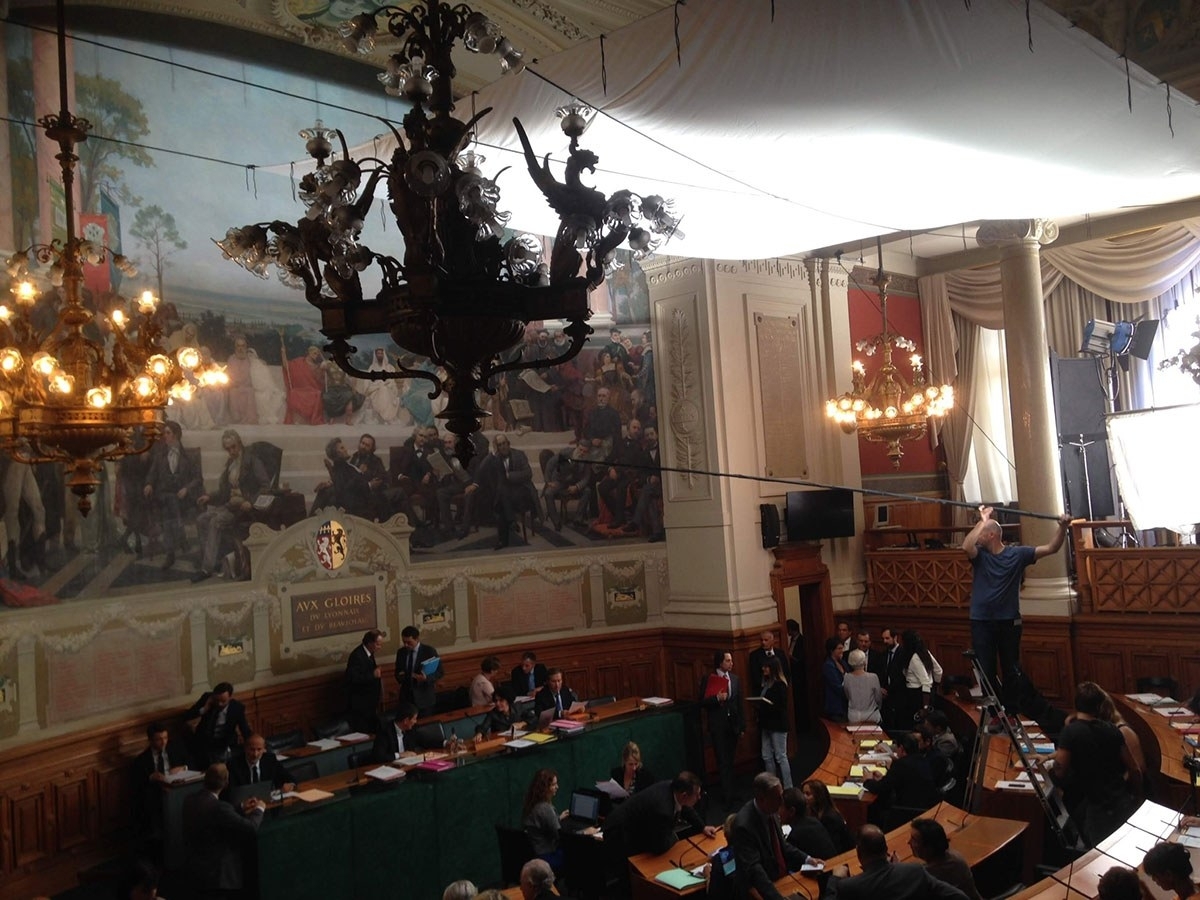
The town council chamber set on "Alice et le Maire," showing a 20x20ft Ultra Bounce hung from the ceiling, hit by an Alpha 4K on the ground, with an M40 hitting an unbleached muslin on the right. © Philippe Leroy.
Buchmann chose ARRICAM Studio cameras and Panavision Primo prime lenses for Alice et le Maire, shooting carefully-choreographed moves through the city hall, the administrative offices, and around protracted dialogue scenes, mainly off the dolly and tracks. With Buchmann working as the camera operator, his crew included 1st AC Julie Conte, 2nd AC Marie Queinec and 3rd AC Isabelle Maurel. Ahmed Zaoui worked as key grip, and the production gaffer was Philippe Leroy. Benjamin Groussain provided his talents when the camera required movement by Steadicam.
The cinematographer opted to capture the of all interior and night sequences on to KODAK VISION3 500T Color Negative Film 5219, using 85c filtration to warm the color temperature of the Tungsten lighting, with KODAK VISION3 250D Color Negativate Film 5207 for the exterior scenes.
“I had used this combination – of Primo glass with KODAK 500T and 250D emulsions – on Amanda,” he explains. “Shooting with a target of T2.8 on the interiors, and T5.6 on the exteriors, allows you to take-in the background environment, which I believe is important for the storytelling, and which I also love visually. The lenses have a smooth transition between focus and bokeh and, in combination with film, they deliver a gorgeous look on skin with beautiful fall-off too.”
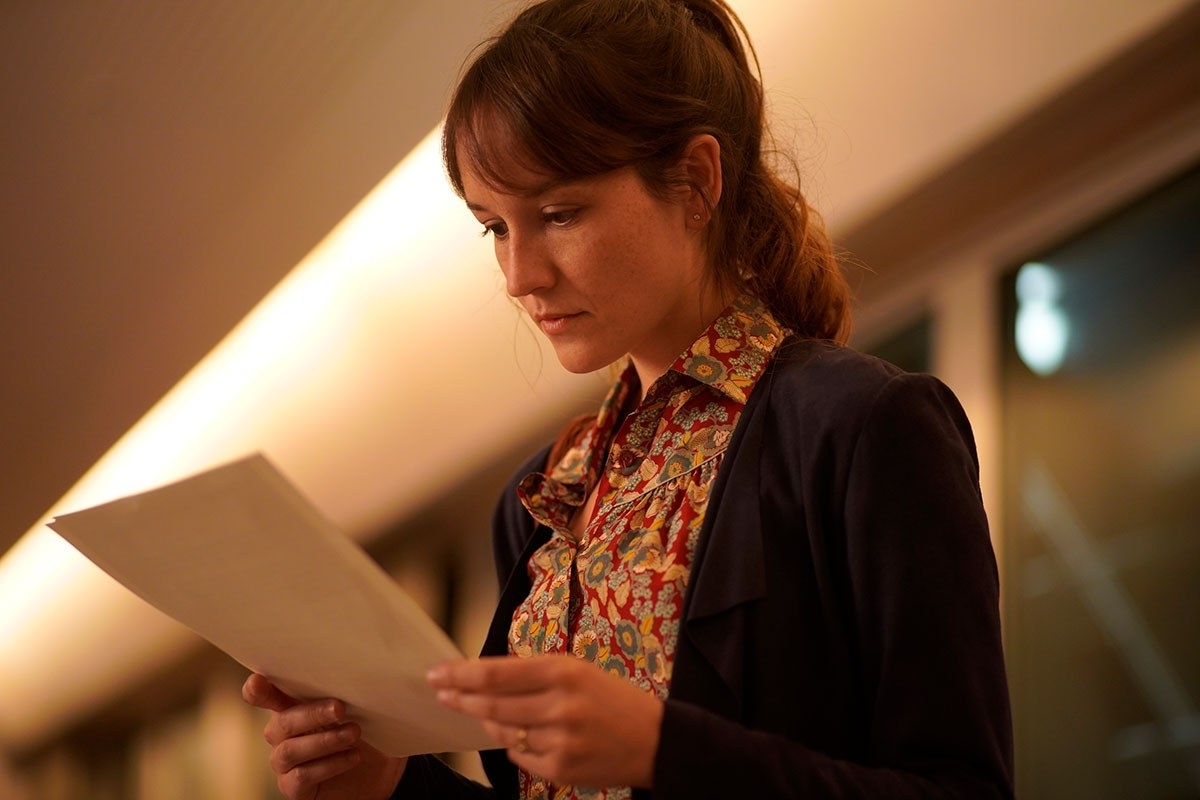
Anaïs Demoustier stars as Alice Heimann in director Nicolas Pariser’s political, philosophical comedy, "Alice et le Maire."
Most of Alice et le Maire takes place indoors, and Buchmann says there were essentially two kinds of lighting to consider: the first being the grand rooms of the city hall, with its splendid architecture, huge windows and golden ceilings; the second, the small, basic, fluorescently-lit offices spaces, where the bureaucrats work.
“The 500T has a sensitivity and sensibility like your own eyes. It is incredibly versatile and was perfect for the naturalistic looks we wanted in two quite different settings,” he says. “As the city hall is an historical monument, our production time there and ability to position lights were both limited. Some takes we could only do once. I was able to bounce 4Ks off the ceiling to balance out the backlight coming through the large windows. The way that the 500T handled the dynamic range in these scenes, especially the pleasant and forgiving way it deals with the highlights, compared to digital, are amongst its greatest strengths.
“The situation in the administrative offices was quite the opposite – fluorescents, low-ceilings, white walls. Yet, through lighting and exposure, I was able to encourage the grain, texture and contrast in the 500T for a more mundane-looking result.”
As for the 250D, Buchman remarks, “I absolutely love this stock. When you shoot outdoors it is always gorgeous. The colors are so rich. The saturation and contrast are both a little bit stronger than the 500T, but they work well together.”
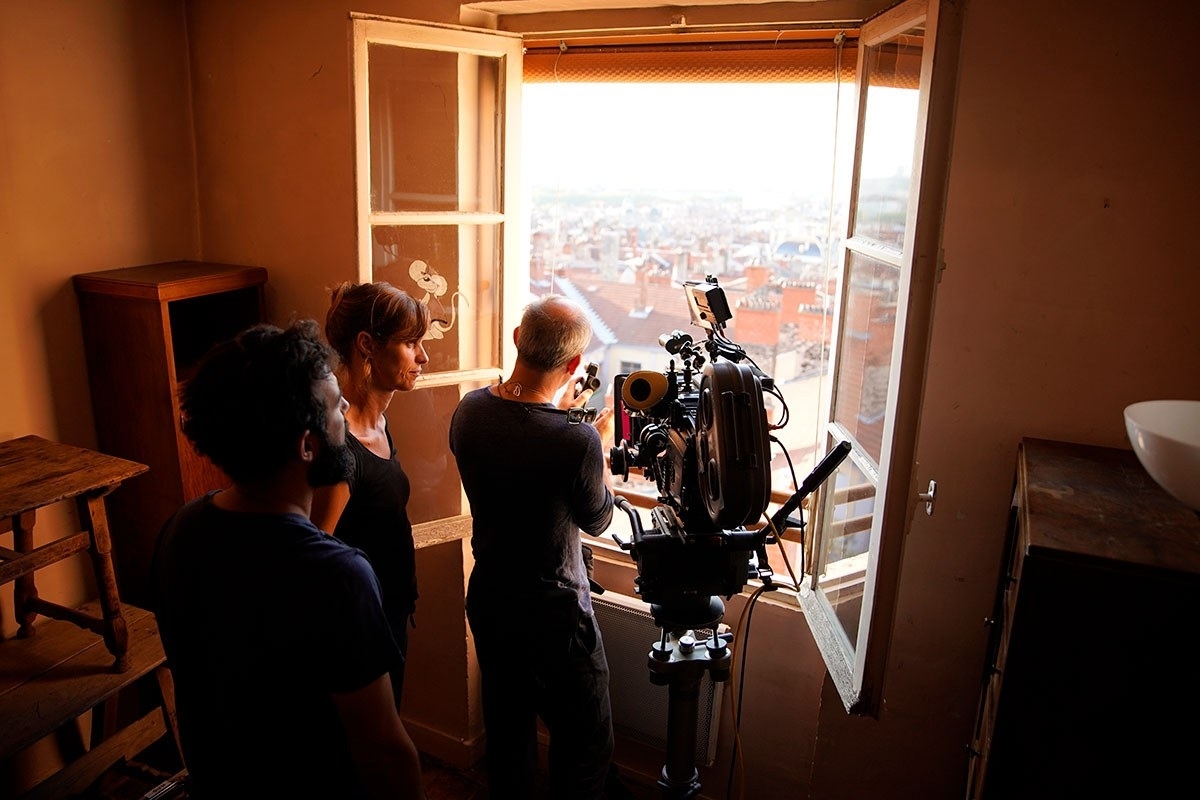
Left to right: Key grip Ahmed Zaoui, actor Antoine Reinartz and DP Sébastien Buchmann AFC, shooting a detail in a newspaper for Nicolas Pariser’s "Alice et le Maire." © Roger Arpajou.
Film negative processing, HD dailies and 4K-select neg scanning on Alice et le Maire were all completed at Hiventy in Paris, in what Buchmann describes as,” a nice, efficient and perfectly affordable workflow.”
He concludes: “I was delighted to have shot once again on film. Our experience on Alice et le Maire, shows that it is perfectly feasible to shoot a great-looking film on film at perfectly reasonable cost. Also, film is just so incredibly versatile in helping you in creating different looks in different situations. I put my trust in it, and it didn’t let us down.”